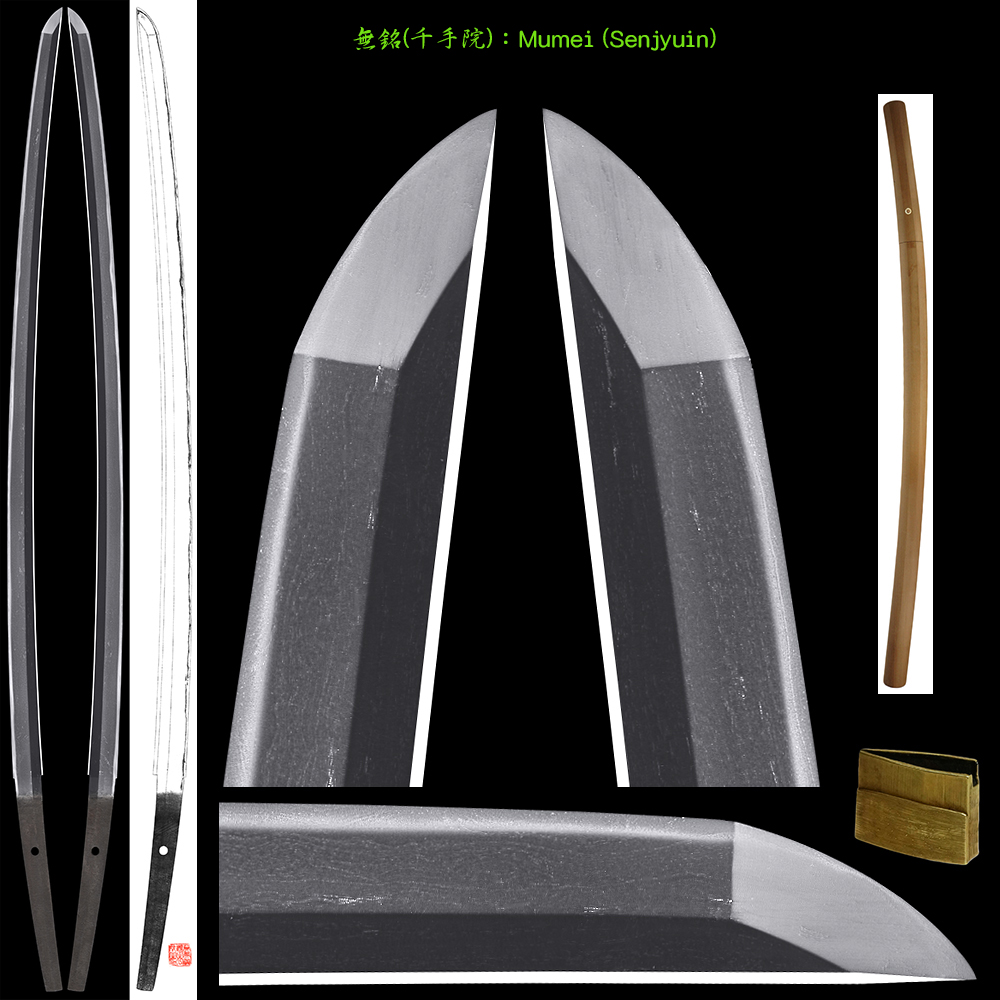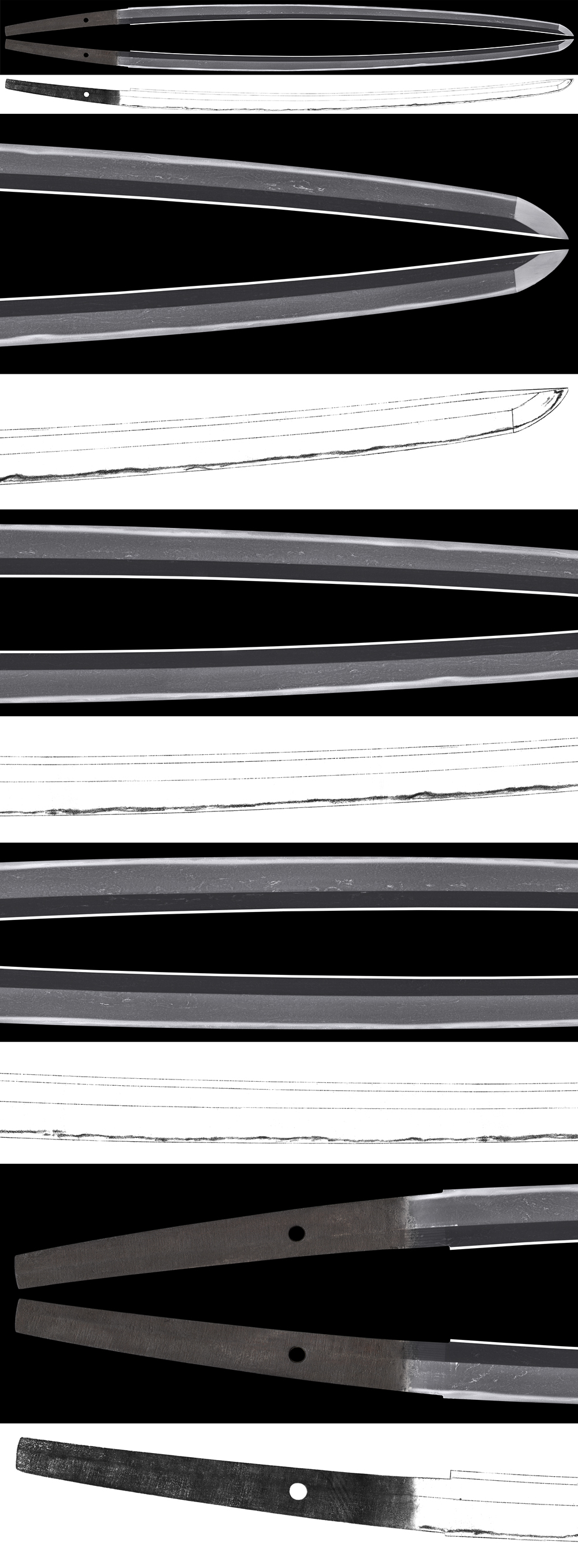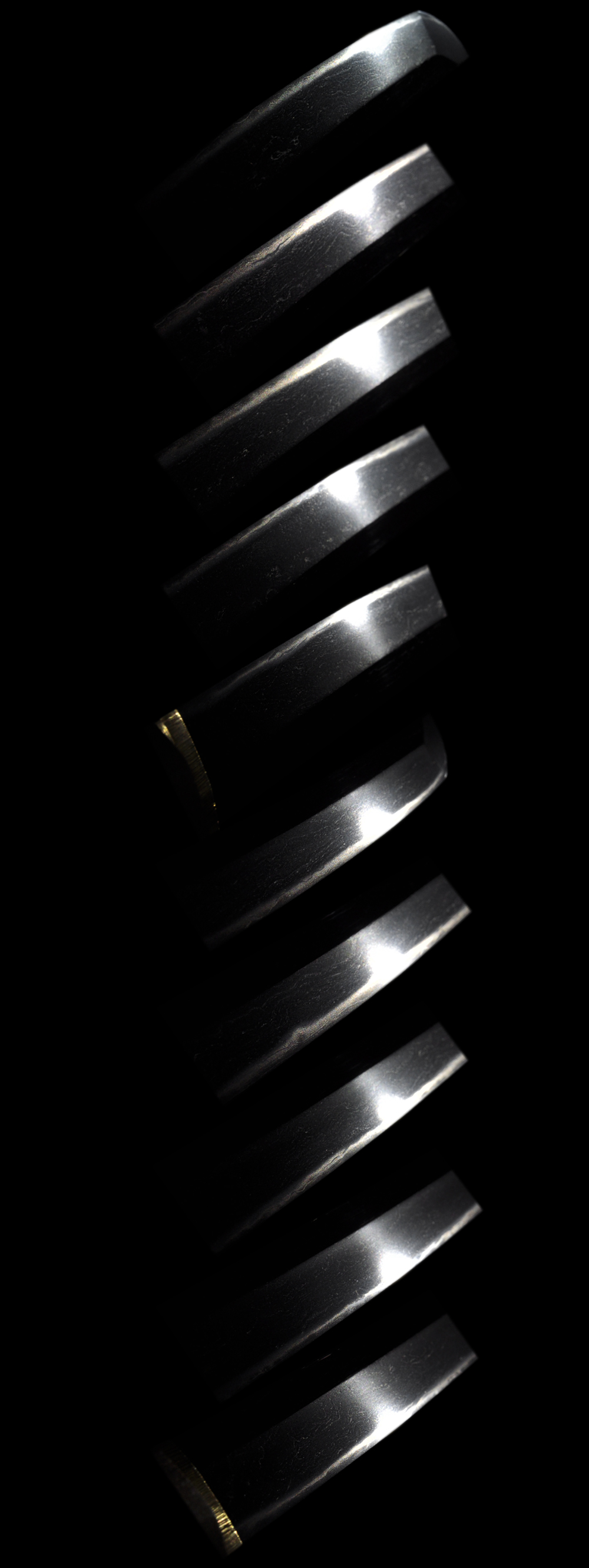Katana: Mumei (Senjyuin)
2017/01/07
Katana in Shirasaya with Koshirae(NBTHK Tokubetsu Hozon paper)
Signature : Mumei (Senjyuin)
(We divide 4 sections for each sword as Saijyo saku, Jyojyo saku
Jyo saku and regular saki)This Mumei Senjyuin sword belongs to Jyosaku ranking.
The blade was polished by high rank polisher
Habaki :Gold double foiled habaki
Blade length : 72.9cm or 28.7inches.
Sori : 1.9cm or 0.74inches.
Mekugi : 1
Width at the hamachi :2.79cm or 1.09inches.
Width at the kissaki : 1.91cm or 0.75inches.
Kasane : 0.69cm or 0.27inches.
Era : Late Kamakura period
Shape: It is Osuriage Mumei with regular width and thickness.
The Sori curve is deep and elegant tachi shape.
Hamon: Nie deki suguha with mixture of Nijyuba. It has deep nioiguchi
with much sunagashi and kinsuji activities. Boshi is round but sharp hamon turn back.
Special feature: Senjyuin is a group of sword smiths that has continued
from early Kamakura period. One of the There is Taima, Hosho, Tegai, Shikkake. Senjyuin is the name
of temple of the Todai-ji temple at Nara.
There is no Ko-Senjyuin katana with signature. There were only few smith that has signed
around Nanbokucho period. The jigane is unique with combination of Itame hada and masame hada.
Most Senjyuin swords are elegant with "moist" jigane.
This work has jigane with masa flaw and there is jigane with masa flaw.
Shinogi-ji isjmixture of itame hada nad masame hada.
The hamon has deep nioiguchi and kinsuji work.
Koshirae:
Tsuba: Round shape iron tsuba with wide fuchi(edge.) Gold patterns are colored in gold in the middle.
Fuchi: Shakudo plate with autumn grass design engraved and inlaid with gold. Mino Goto.
There is frog design inlaid in gold.
Saya: Abalone sparkle. Liner pattern is lacquered in black.
Menuki: Shakudo plate with chrysanthemum design engraved and inlaid with gold.
NBTHK Tokubetsu Hozon paper.
Aoi Art estimation paper : whole Oshigata.




